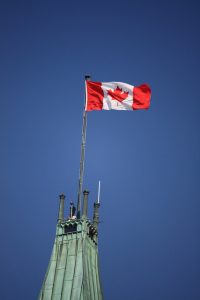7.1.2 Shifting Focus: From Sociohistorical and Macro-Sociological Perspectives to Meso and Microsociological Analyses
Frédérick Guillaume Dufour and Dave Poitras
Ernest Renan, a French historian and philologist, was among the first scholars to address the nation as a concept. At a conference at the Sorbonne in 1882, he defined the nation as a modern historical construction that prompted, in conjunction with other numerous factors, a significant number of individuals to wish to live together under specific conditions while sustaining both the idea of a common past and a foreseeable future. For this idea to be successful, he noted, the nation must be a daily plebiscite. In spite of this somehow romanticized view on the matter, Renan raised an issue that was not properly addressed within the field of nationalism before the end of the next century: its everyday aspect. Only in the 1990s did a meso and micro-sociological turn take place, echoing back to Renan’s position that regardless of how a nation came into being, its existence may rest on everyday plebiscites.
A major work in the revitalization of this aspect of the nation is Michael Billig’s Banal Nationalism. In this book, Billig defends the following thesis: “Nationalism, far from being an intermittent mood in established nations, is the endemic condition” (Billig, 1995, p. 8). Nationalism, he argues, is not a political phenomenon that only occurs during civil or international warfare; it is also at the core of the social reproduction of Western countries, even when under very subtle forms. This is the phenomenon he identifies as “banal nationalism,” which covers the ideological habits that enable established nations to be reproduced. According to Billig, nationalism is not only associated with the pre-nation state era of a country; it is intrinsic to the everyday life of all inhabitants of a state. He argues that individuals are constantly socialized to the nation by means of different mechanisms, patterns, daily routines and symbols. Embedded in the everyday life of all inhabitants of a nation, these routines, rituals and symbols usually go unnoticed. In so doing, individuals never forget to which nation they belong, but they forget how they are consistently reminded of this belonging.

The most common symbol Billig employs to illustrate this specific type of nationalism is the flag. There are, according to him, two ways in which it is used. First, there is an active use of the flag: the waved flag. This expression refers to the most conscious use of the flag—or any other national symbols, signs, references, or lexicons—to assert a sense of national belonging or to make a statement involving the nation on occasions such as national holidays or international sports competitions. Second, there is a passive use of the flag: the unwaved flag. This term applies to a flag—or again any other national symbols, signs, references, or lexicons—that goes unnoticed, on a public building for example, but that reminds us unconsciously of our national belonging. Billig argues that everyday life is filled with waved and unwaved flags: the lexicon of politicians (us the nation, them another nation); the weather forecast, which geographically reminds us of where we are in our nation, but also in a world divided into nations; international sports competitions; or again wars between nations that fight for the liberty and freedom of the people of a nation.
The persistence of banal nationalism is, according to Billig, mostly orchestrated by the state, as its existence ultimately depends on it. Constructing banal nationalism in everyday life induces, he argues, citizens to work for the greatness of their nation. But most of all, it induces individuals to sacrifice their lives for their nation’s cause, if needed, whence the significance for states to maintain a constant flagging of the nation it aims to represent and defend. For banal nationalism to reach its full efficiency, the nation not only needs to be celebrated on special occasions, but also on a daily basis.
Following Eric Hobsbawm’s observation that nations, while constructed from above, cannot be understood unless also analyzed from below, Rogers Brubaker developed what he referred to as a cognitive approach to examine the nation both in everyday life and in a macro-sociohistorical perspective. This approach suggests focusing on nationhood rather than nations as groups. Instead of referring to nations as a category of analysis, Brubaker investigates the nation as a category of practice to understand how nationhood structures perceptions, informs thoughts and experiences, or organizes discourses and political actions. Groups, in this perspective, are not a constant but a variable that may become salient under different circumstances. The nation is hence not a thing in the world, but a perspective on the world, among others. By investigating nationhood with this approach, Brubaker aims to prevent groupism, i.e., an analysis that automatically takes nations, races, or ethnic groups as basic units of analysis. In so doing, he avoids contributing to the mere static construction and reification of such groups through his investigations and rather provides a relational and processual understanding of nationhood. His investigation Nationalist Politics and Everyday Ethnicity in a Transylvanian Town (2006) examines nationhood with this cognitive approach both from above and from below.

